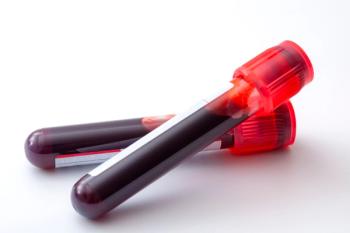
Assessment of postsurgical pain in cats (Proceedings)
Cats add an extra dimension of difficulty when it comes to assessing pain in animals. Listed below, are just some of the "new onset pain behaviors" shown by cats in acute severe pain. (adapted from Karol Matthews's excellent chapter in the Veterinary Clinics of North America Small Animal Management of Pain, July 2000 Vol 30 issue entitled: Pain Assessment and General Approach to Management). However, the observer must be very astute if they are to pick up signs of moderate or mild pain, and are exhibited not by the onset of new behaviors, but rather absence of usual behaviors.
Cats add an extra dimension of difficulty when it comes to assessing pain in animals. Listed below, are just some of the "new onset pain behaviors" shown by cats in acute severe pain. (adapted from Karol Matthews's excellent chapter in the Veterinary Clinics of North America Small Animal Management of Pain, July 2000 Vol 30 issue entitled: Pain Assessment and General Approach to Management). However, the observer must be very astute if they are to pick up signs of moderate or mild pain, and are exhibited not by the onset of new behaviors, but rather absence of usual behaviors.
• abnormal sitting or lying posture
• restlessness, thrashing
• splinting of abdomen, staying curled up
• whining, groaning, yowling
• limping, unwilling to get up, unwilling to lie down
• lack of appetite
• Trembling, ears laid back
• increased respiratory rate, expiratory grunt
• bulging eyes, dilated pupils
• aggression, resents being touched, dull behavior,
• twitching tail
• licking or biting at affected area,
• lack of grooming
Cats can be seen with many of the signs described for dogs, but are more likely to become extremely grumpy when they are in pain, and may twitch their tail as a sign of agitation. Cats in severe postoperative pain may become aggressive, tearing at the bandage, frantic and vocalizing. However, some cats actually purr when they are distressed or in pain! Also, cats are more likely to exhibit withdrawn behavior – crouching in the back of the cage, unwilling to use the litter box, etc., than dogs.
Systolic hypertension in cats may be the only physiologic parameter shown to correlate with postoperative pain in animals. In one study, cats receiving no (or inadequate) dosages of butorphanol (0.1 mg/kg) after ovariohysterectomy often had increased systolic blood pressure and serum cortisol concentration when compared with cats receiving adequate pain medication. The cats with increased systolic blood pressure also demonstrated behavioral changes associated with pain (withdrawal, remaining still, and vocalizing when moved) compared with cats that had lower blood pressure, which were willing to move and returned to a "normal" personality sooner. However, the practicality of using systolic blood pressure as a gauge of pain has not been determined.
The principles of behavior-based pain scoring in animals are discussed in the previous session and those principles apply to both dogs and cats. In contrast to dogs, however, a validated acute pain scale does not exist in cats, though several groups are working on this endeavor. However pain scoring tools have been produced and are in use in practice (e.g. the Colorado State University Pain Scale).
The author uses a hybrid simple descriptive and dynamic, interactive visual analog scale employing 1) an observation of the patient without interacting, 2) an observation of the patient while interacting, and 3) palpation of the painful site, scoring the patient's pain 0-10 for that particular procedure. This utilizes the totality of observer experience and patient's signs to render the score. Inter-observer validity is diminished by having the same individual scoring the patient throughout the post-operative period, and for that individual to be familiar with the patient's personality prior to the onset of the surgery.
Newsletter
From exam room tips to practice management insights, get trusted veterinary news delivered straight to your inbox—subscribe to dvm360.






